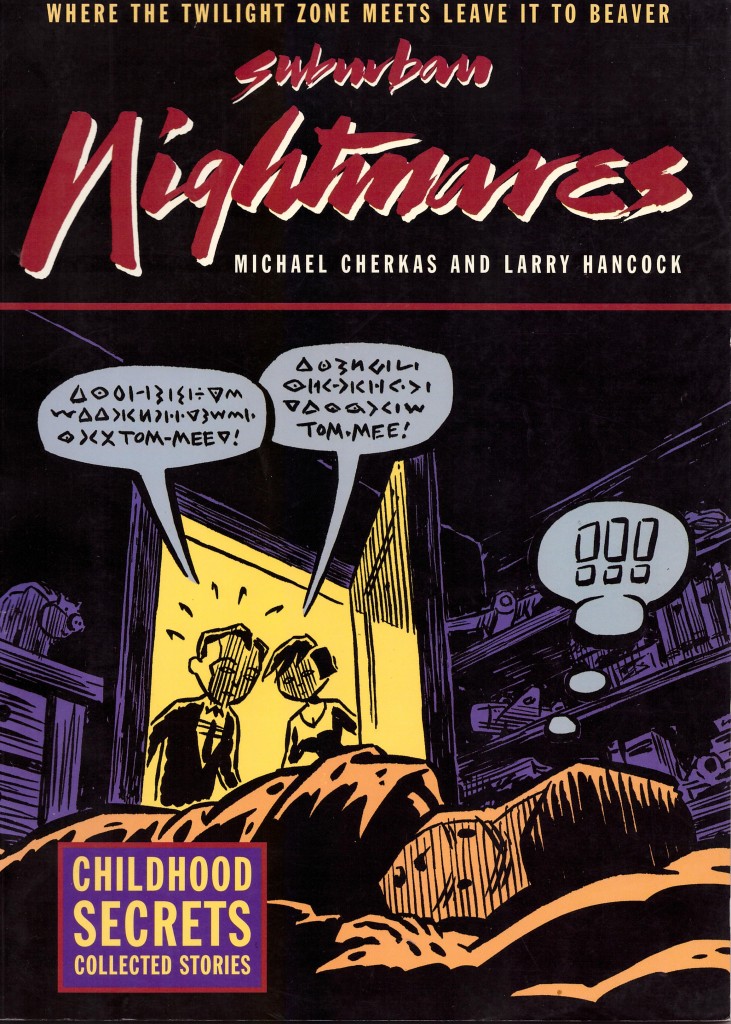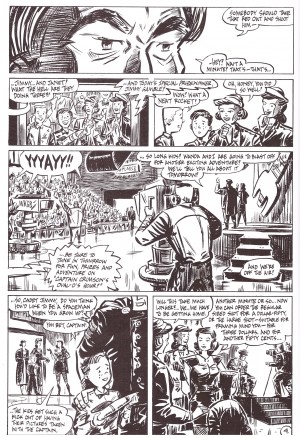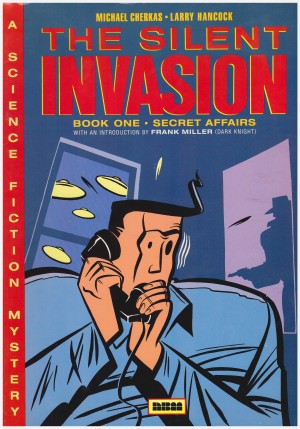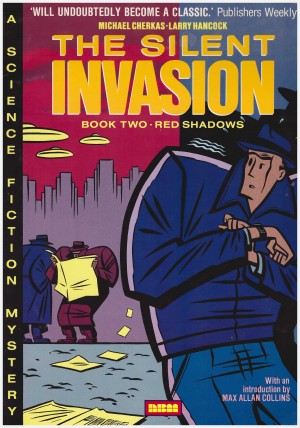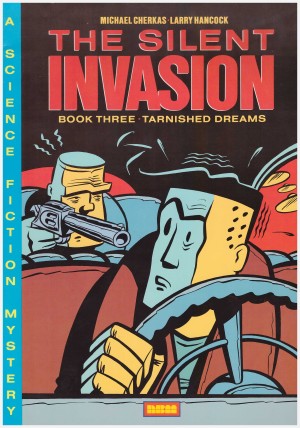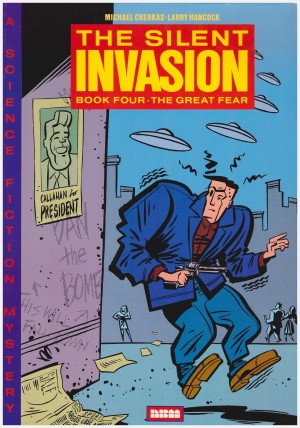Review by Frank Plowright
Whoever came up with cover tagline of “Where The Twilight Zone meets Leave it to Beaver” absolutely nailed the premise of Suburban Nightmares. Larry Hancock and Michael Cherkas, with occasional help from John Van Bruggen, look back at the rose-tinted version of the late 1950s and the early 1960s and sprinkle it with a hefty dose of both reality and the fears of the era.
Their previous collection, The Science Experiment, was short stories, but Childhood Secrets presents three longer tales, each concerned with aspects of being a child, and in effect completing a trilogy of story forms for the creators, whose first work was the extended narratives of The Silent Invasion. Their speciality is mood. The way their stories are constructed ensures there’s a mystery constantly hovering on edge of our perceptions, and theirs is a world that cleverly induces and feeds paranoia, which is on occasion merited. Children stumble into horror, and there are small visual clues prodding our own anticipations. In one story a suburban housewife visits a neighbour never seen in daylight. The door isn’t answered, but the viewpoint is from within, and the books on the shelves have titles such as Acts of Treason and Six Seconds in Dallas, instantly leading the imagination.
Cherkas varies his visual methods from story to story, yet always heavy on the black shading and the inking, with chunky linework on occasion having a potato print simplicity. Just as the art varies, so do the stories, with all three creators involved in the plotting and scripting. ‘Foster Child’ is from the viewpoint of a young child who comes to believe his parents have been replaced by aliens, but it takes a weird and disturbing turn. ‘Mister Ford’ concerns a new arrival in the pristine neighbourhood of late 1963 and those who watch over him, while ‘Secrets’ is the life of young Jimmy growing up under the controlling eye of his brutal and overbearing father. This is a man who considers Communists are taking over the country, and that the kids TV show Captain Crimson is broadcasting secret messages aiding their cause.
That last story is significantly longer than the other two, occupying half the book, and changing early into an accomplished noir detective piece. The period setting enables an exploitation of a very contemporary fear. The use of damaged and discredited characters adds to the mystery elements, and it builds to a dark finale and a grim twist. All in all very satisfying.
